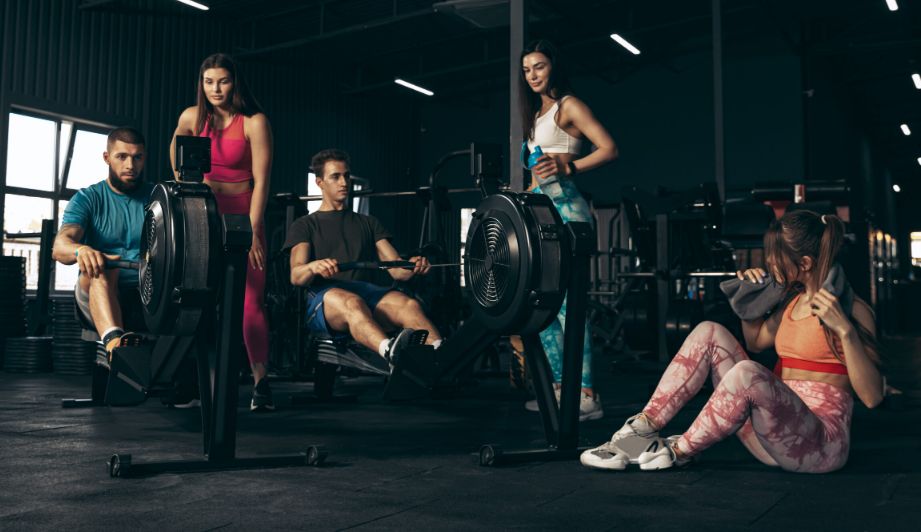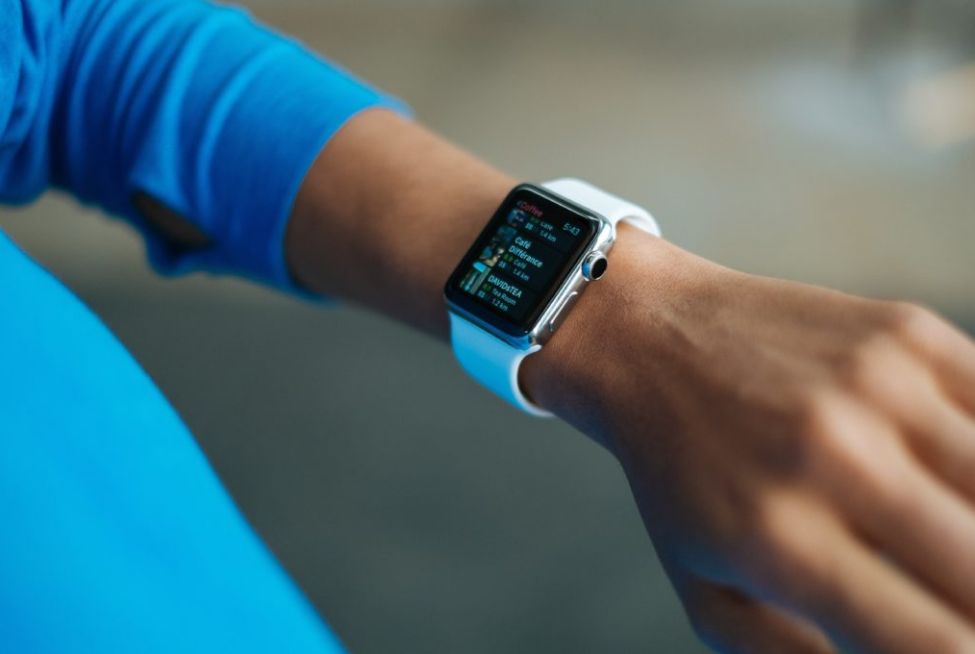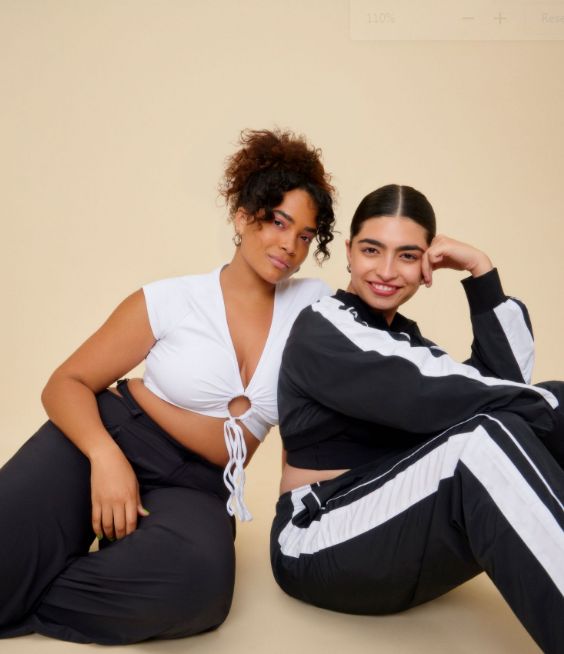In this era, sustainable active wear aligns with Earth's heartbeat. Our journey? Unveiling this fusion's magic. We'll dissect materials, techniques, and impacts. Each stitch weaves a greener tomorrow. Fabric speaks of forests, oceans, and skies. This blog is your compass; navigate the sustainable active wear universe with us.

In sustainable active wear, innovative fabrics are key think Tencel™, derived from eucalyptus trees, high in moisture management. Eco-friendly nylon, like Econyl®, rebirthed from discarded fishing nets, makes waves in durability. Spandex alternatives, created from bio-based materials, stretch without snapping sustainability. Bamboo fabric whispers to skin, marrying softness with antimicrobial properties.
In this arena, traditional polyester loses its crown to recycled PET, lessening landfill loads. Fabric innovation isn't just a trend; it's a revolution, with every thread woven for Earth's tomorrow.

Circular design, a beacon in active wear transformation, prioritizes end-to-end sustainability. Materials, reborn, not discarded, form the core of this philosophy.
Think regenerative fabrics: garments designed for disassembly and reuse, challenging linear consumption. Zero-waste cutting techniques, precision-lasered, ensure minimal fabric scrap. In this ecosystem, every zipper, button, and seam plays a role in longevity.
Dyeing processes, often water-guzzling monsters, are tamed with closed-loop systems. Active wear, thus transformed, becomes more than attire; it's a statement, a commitment to a planet in peril.

In the sustainable active wear, IoT's role is pivotal. Smart fabrics interwoven with IoT tech offer real-time data is optimizing user experience. These garments, powered by IoT, seamlessly blend into daily routines. Their sensors sync with apps, providing eco-friendly insights. Energy consumption tracks, while maintaining minimal digital footprints. Innovative and interconnected, they redefine fitness fashion.
Biometric sensors in active wear serve a dual purpose. They monitor vital stats, contributing to health-aware lifestyles. At the same time, they enforce the sustainability ethos. These sensors, embedded in fabrics, gauge heart rate, temperature, and more. Data gleaned aids in fine-tuning exercise regimes, reducing resource waste. The result: a harmony between health and eco-consciousness.
Energy efficiency stands at the forefront of sustainable tech. In active wear, this translates to low-power consuming designs. Devices harness solar or kinetic energy, curbing carbon footprints. This approach extends battery life, reducing electronic waste. The tech is not just eco-friendly; it's a testament to innovative engineering. Energy efficiency becomes a pillar in sustainable fashion.
Sustainable materials shape the future of active wear. Recycled fibers merge with cutting-edge technology. These materials are not just environmentally sound; they're durable and adaptable.
From recycled PET to organic cotton, choices abound. Such innovation in textiles underscores a commitment to the planet. Sustainable materials in tech-enabled wearables are not a trend; they're a necessity.
In the digital age, data security in active wear is paramount. Encryption protocols guard user data, ensuring privacy. This security extends from the cloud to the garment. Wearables employ advanced algorithms to protect biometric data. This focus on security upholds user trust. It also aligns with sustainability, as ethical data handling is a cornerstone.
User customization in active wear marries individual needs with sustainability. Personalized settings optimize device performance, conserving energy.
Wearables adapt to user preferences, enhancing longevity. This reduces the need for frequent replacements, curtailing waste. Customizable wearables thus represent a fusion of personalization and eco-responsibility. They embody a sustainable future in fitness technology.

In weaving nature's threads, sustainable active wear turns to Tencel™, its softness rivaling cotton's embrace. This fiber, derived from Eucalyptus trees, breathes life into apparel. Its production, a symphony of low H₂O use and minimal chemical reliance, spells a green future. Sustainability and comfort coalesce, as Tencel™ adorns the eco-conscious.
Polyethylene terephthalate (PET), once mere bottles, now finds new purpose in active wear. Through a process of collection, cleaning, and re-spinning, PET transforms into performance fabric. This cycle of renewal, from discarded to desired, champions the ethos of reduce, reuse, recycle. Active wear thus becomes a canvas for environmental responsibility.
3D body scanning with a marvel in measurement, tailors active wear with laser precision. Algorithms calculate dimensions, crafting garments that fit like a second skin. This fusion of technology and tailoring redefines comfort. Custom- design fit active wear, embracing each unique contour, marries innovation with individuality.
Active wear’s tapestry weaves diverse designs, from minimalist to avant-garde. Style variation caters to the eclectic tastes of the active. Fabrics like spandex and elastane bend and flex, allowing for aesthetic and functional diversity. This sartorial spectrum reflects the myriad personas of its wearers.
Endurance is key in sustainable active wear. Fabrics like Cordura® resist wear, heralding longevity. Reinforced seams and water-resistant coatings combat the elements. This durable design philosophy counters the throwaway culture. Active wear, robust and resilient, stands as a testament to quality over quantity.
Colors in active wear are not mere hues; they're expressions of personality. Dyeing techniques, eco-friendly and vibrant are offer a kaleidoscope of choices. From earth tones to neon bursts, color options cater to all moods. This chromatic diversity paints a world where choice and sustainability coexist.
Immutable ledgers, blockchain's core, safeguard active wear origins. Transparency soars as each fiber's journey is cryptographically sealed. Digital records, unalterable and open, chronicle each garment's tale.
From organic cotton fields to ethical factories, blockchain whispers sustainability's secrets. Smart contracts ensure environmental standards; fabric to final stitch.
QR codes, gateways to garment histories. Scan and a digital dossier unfold. Cotton's birthplace are dye's composition, labor ethics – all revealed in a square. Active wear's life move narrated by pixels. Consumers become detectives, uncovering eco-stories through simple scans. QR is the modern Rosetta stone for sustainable fashion.
Mapping is the cartography of conscience. Each node has a checkpoint for sustainability. GPS coordinates link farms, mills, factories – a textile atlas. Active wear's odyssey, from seed to store, meticulously plotted. This navigation reveals the truth behind threads. Supply chain transparency, a compass guiding ethical choices.
Ethical sourcing has a moral compass for fabric selection. Partners vetted for fairness, eco-footprints scrutinized. Human hands and hearts behind each thread honored. Conscious choices ripple through global communities. Active wear becomes a tapestry of responsibility. Each purchase gives a vote for dignity and earth stewardship.
Carbon metrics are the shadow of active wear. Each step is from loom to logistics, carbon-counted. Reducing emissions part an industry's Everest. Renewable energy, low-impact dyes – weapons in the carbon war. Active wear's footprint always dances with ecology. Consumers demand green steps; brands respond in strides.
In our era, eco-awareness escalates, driving sustainable active wear's market surge. Consumers, eco-savvy, opt for products with minimal environmental impact.
This trend, powered by ecological urgency, prompts brands to pivot towards sustainability. Eco-fabrics, such as organic cotton and recycled polyester, are now vogue. Consumers' green preferences fuel this active wear evolution.
The health wave, a tsunami in consumer consciousness, elevates sustainable active wear's stature. With a surge in fitness aficionados, active wear becomes a staple.
This gear is not just functional, now mirrors health values. Sustainable materials, boasting fewer toxins, align with wellness goals. Health-conscious buyers, gravitate towards eco-friendly active wear options.
Fashion's tides are turning; sustainability becomes the new vogue. Trendsetters now sport eco-chic active wear, setting a green precedent.
A revolution in fabric and design prioritizes planet over profit. Fashionistas, once slaves to trends, now champions of eco-responsibility. Sustainable active wear, therefore, rides the wave of this fashion metamorphosis.
Quality, a non-negotiable in today's market, becomes synonymous with sustainability. Durable materials, eco-engineered, withstand the rigors of active lifestyles. This shift, a seismic change in consumer expectations, favors sustainable active wear. High-performance eco-fabrics, a nexus of durability and responsibility, become the gold standard. Buyers, quality-centric, thus flock to sustainable active wear options.
Brand ethics, in the spotlight, steer the active wear market's compass. Companies championing eco-friendly practices gain consumer trust. This ethical pivot, a paradigm shift in brand strategy, prioritizes planet health. Ethically-aware consumers, align with brands mirroring their values.
Climate consciousness, a beacon guiding consumer choices, illuminates the path for sustainable active wear. Active wear, once a mere commodity, now carries a climate statement.
Climate-smart materials, a harbinger of change, redefine active wear standards. This awareness, a ripple turning into a wave, steers market preferences. Climate-concerned consumers, therefore, champion active wear that treads lightly on the planet.
|
Factor |
Market Influence |
Key Metrics |
Consumer Insights |
Industry Response |
Product Development |
Marketing Strategy |
|
Eco-Consciousness |
↑ Consumer Preference |
CO2 Footprint Reduction |
Seeking Eco-friendly Fabrics |
Biodegradable Materials |
Low-Impact Production |
Green Branding |
|
Health Trends |
↑ Functional Demand |
Wellness Index |
Demand for Performance Gear |
Antimicrobial, Breathable Tech |
Ergonomic Design |
Health-Centric Promotion |
|
Fashion Shifts |
↑ Aesthetic Appeal |
Style Evolution Rate |
Desire for Trendy Looks |
Sustainable yet Stylish Options |
Adaptive Materials |
Influencer Collaborations |
|
Quality Demand |
↑ Durability Focus |
Longevity Metrics |
Preference for Long-lasting Wear |
High-Tensile Strength Fibers |
Reinforced Seams |
Quality-Centric Ads |
|
Brand Ethics |
↑ Brand Loyalty |
Ethical Practice Scores |
Support for Ethical Brands |
Fair Trade, Transparency |
Ethical Sourcing |
CSR (Corporate Social Responsibility) Campaigns |
|
Climate Awareness |
↑ Environmental Responsibility |
Carbon Offset Scores |
Climate Change Concerns |
Energy-Efficient Processes |
Climate-Adaptive Features |
Eco-Awareness Campaigns |
A Table On What Drives the Strong Market Demand for Sustainable Active wear!
In sustainable active wear’s realm, market research shines light on eco-friendly fabric trends. Diving deep, we uncover recycled PET's rising demand. Global forecasts, like a precision-crafted timepiece, reveal a shift toward organic cotton. Tackling the challenge, brands now scrutinize their carbon footprint, leveraging data-driven insights. Biodegradable materials, once a whisper, now roar in popularity.
Surveys, a mosaic of consumer voices, illuminate eco-conscious preferences. Participants, like bees to honey, gravitate towards ethically sourced materials. Their responses, encoded in bar graphs and pie charts, echo a green ethos. Brands, listening intently, sculpt their strategies accordingly. Respondent demographics, a kaleidoscope, showcase diverse eco-priorities.
In the arena of competitor analysis brands engage in a ballet of benchmarking. Eco-friendly practices, dissected and analyzed, reveal hidden strategies. Market leaders, their sails full of green innovation, set a course others follow. Emerging brands, with nimble agility, adapt and evolve. This dance of competition fosters a rich ecosystem of sustainable solutions.
Innovation, the North Star in sustainable active wear, guides forward-thinking designs. Smart fabrics, interwoven with sustainable technology, emerge.
Design teams, architects of the future, draw from a palette of organic dyes and recycled yarns. Prototypes, born from 3D printers and CAD models, reflect an ethos of renewal. Each stitch, a testament to creative resilience, bends the arc toward sustainability.
Goals set with precision, mark the journey to Eco-excellence. Milestones, like waypoints, chart progress in material reduction and energy efficiency.
Zero-waste initiatives, once a distant dream, now anchor corporate missions. Life cycle assessments (LCAs), rigorous and revealing, underpin these commitments. Each goal, a stepping stone, builds a bridge to a greener tomorrow.
Compliance, the backbone of integrity, demands adherence to environmental standards. Legislation, like a compass, guides industry practices. ISO 14001 and OEKO-TEX® certifications, badges of honor have signal commitment. Audits, meticulous and thorough, ensure alignment with green mandates.
In the sustainable active wear, bio-fabrics emerge as a prime choice. Eucalyptus fibers, for instance, offer breathability and comfort.
These textiles, harnessed from organic sources, reduce environmental strain significantly. Often, bio-fabrics are combined with natural dyes, enhancing eco-friendliness. Tencel, a popular bio-fabric, boasts moisture-wicking properties, ideal for athletic wear.
Manufacturers often prefer it for its low ecological footprint. The trend towards bio-fabrics in activewear signals a shift towards environmental consciousness.
Nano-tech in active wear represents a fusion of science and sustainability. Fabrics at the nano-scale offer enhanced durability and breathability. Silver nanoparticles, for instance, impart anti-odor properties. This technology ensures longevity, reducing the need for frequent replacements.
Nano-enhanced fabrics also feature UV protection, a boon for outdoor enthusiasts. This tech is not just about performance; it's a stride towards sustainability. By improving garment lifespans, nano-tech lessens the environmental impact of clothing production.
Waterless dye technology marks a revolution in fabric coloring. Traditional dyeing consumes vast amounts of H₂O and chemicals. In contrast, waterless methods use supercritical CO₂, significantly reducing H₂O usage. This process also limits chemical waste, a win for the environment.
Brands adopting waterless dye are applauded for their eco-commitment. Waterless dye is not just a trend; it's a necessity for a sustainable future in fashion. Active wear adopting this tech stands out for both its aesthetics and ethics.
Upcycled textiles turn waste into wonder in the active wear domain. Discarded fabrics find new life in eco-friendly athletic wear. This approach curtails waste, contributing to a circular economy. Upcycling also taps into the uniqueness, offering one-of-a-kind active wear pieces.
Brands embracing upcycling are seen as pioneers in sustainable fashion. Upcycled active wear is not just about style; it’s a statement for the planet. This method reflects a deep commitment to reducing the fashion industry's footprint.
Hemp fibers are revolutionizing sustainable active wear. Known for durability, hemp withstands rigorous athletic demands. Its growth requires minimal pesticides and water, underscoring its eco-credentials. Hemp's moisture-wicking properties parallel more traditional athletic fabrics.
Additionally, it’s naturally antimicrobial, keeping active wear odor-free. Hemp’s inclusion in sports apparel underlines a green shift in the industry. This versatile material exemplifies how nature and performance can coexist harmoniously.
Zero-waste design in active wear challenges conventional manufacturing norms. This approach maximizes material usage, leaving minimal remnants. Patterns are meticulously planned to minimize offcuts. Zero-waste garments often feature modular designs, enhancing adaptability.
This method not only conserves resources but also sparks creativity. Brands adopting zero-waste principles are viewed as innovators. Zero-waste design in active wear isn’t just a trend; it’s a testament to sustainable ingenuity. It exemplifies a responsible, forward-thinking approach to fashion.
 Buying Patterns
Buying Patterns
Active wear aficionados crave eco-friendly fabrics, opting for Tencel™ over traditional cotton. Sales of recycled polyester gear (rPET) have soared, eclipsing 5 million units in 2022. Conscious consumers pivot towards brands like Patagonia®, known for sustainability.
The trend purchasing less but better quality, as seen in decreased monthly buys. Durability tests, a norm, push for longer-lasting apparel. In this eco-conscious era, buying is a statement.
Reviews, the new currency, shape the sustainable active wear market. Eco-friendly threads receive glowing commendations, boosting sales.
Negative feedback on sustainability practices leads to a brand's decline. Patrons scrutinize Green Seal™ certifications before purchase. Influencers' endorsements of sustainable brands echo across digital platforms, reverberating.
Real-life usage stories, shared online, become powerful marketing tools. Reviews are the crucible in which brand reputations are forged.
Instagram's #EcoFashion garners 1.2M posts, a testament to social media's power. Tweets about sustainable fabrics reach audiences in the millions. TikTok challenges promote upcycled active wear, a viral phenomenon. Brands harness YouTube for eco-material education, engaging millions.
Facebook groups, dedicated to sustainable fashion, burgeon daily. Social media: a megaphone amplifying sustainable active wear's allure.
Ethical sourcing becomes the backbone of brand integrity in active wear. Consumers probe deeper into supply chain transparency, demanding details.
Fair labor practices in garment manufacturing gain spotlight, scrutinized. Environmental footprint of production facilities are key consideration now. Animal welfare in material sourcing has no longer an afterthought. Ethical choices are the new benchmarks for brand excellence.
Brand loyalty intertwines with a company's green initiatives. Patagonia’s Repair & Reuse program cements customer fidelity. Adidas' Parley collection, turning ocean plastic into shoes, wins hearts. Sustainability reports, published annually, foster trust and loyalty. Consumers align with brands mirroring their eco-values, a new norm. Brand loyalty now thrives on green credibility.
Price sensitivity shifts in the wake of environmental awareness. Higher costs for eco-friendly materials, initially a deterrent, become acceptable. Consumers weigh long-term value over short-term savings, a paradigm shift. Price tags reflect more than cost they symbolize environmental commitment.
Budget-conscious shoppers turn to second-hand sustainable gear, a growing market. In sustainable active wear, price is a reflection of ethical investment.
In the labyrinth of fabric innovation, biodegradable fibers emerge as heroes. These warriors, like Tencel and recycled PET, redefine sustainability.
R&D labs, pulsating with creativity, are re-engineering active wear’s DNA. The synergy of nature and technology births fabrics with minimal environmental footprints. Each thread woven is a testament to a greener future.
Tech's embrace in active wear is a silent revolution. Smart fabrics are embedded with IoT sensors, monitor athletes' biometrics.
This integration transforms garments into data goldmines, aiding performance analysis. The fusion of tech and textile, an art in itself, enables garments to adapt to changing environmental conditions. It's a symphony of innovation, echoing in every stitch.
Prototype testing: the crucible where theory meets reality. Durability and comfort clash and dance. Labs buzz with the testing of advanced moisture-wicking properties.
Wearability trials, rigorously conducted, ensure the gear withstands the harshest conditions. In this arena, only the fittest fabrics survive, sculpting the future of active wear.
Environmental studies whisper crucial truths about production impacts. These revelations guide the journey towards eco-friendly active wear.
Carbon footprint analysis, a staple in these studies, informs material choices. The outcome: active wear that champions the planet's health. In this quest, even the dyes used are scrutinized, ensuring harmony with Earth.
User experience is the North Star guiding active wear design. Feedback loops, essential in shaping product evolution, are meticulously analyzed.
Comfort, style, and functionality blend in this crucible. The result: active wear that resonates with the user's soul and body. In this realm, every seam, zipper, and fabric choice matters.
Sustainability metrics are the compass guiding the active wear industry. These quantifiers, like water usage and carbon emission, are scrutinized.
Brands championing these metrics set industry benchmarks. Their commitment is reflected in every product, ensuring a legacy of eco-consciousness. In this pursuit, each metric is a step towards a sustainable future.
We traversed the sustainable active wear realm, a tapestry of eco-resilience. We witnessed fibers transforming into shields for nature. Innovations blossomed, mirroring nature's wisdom.
Remember, each purchase is a vote for sustainability. Your choices mold the industry's fabric. Embrace this green revolution at SANSANSPORTS. Join the movement; choose attire that respects Mother Earth. Be the change, wear the future.
